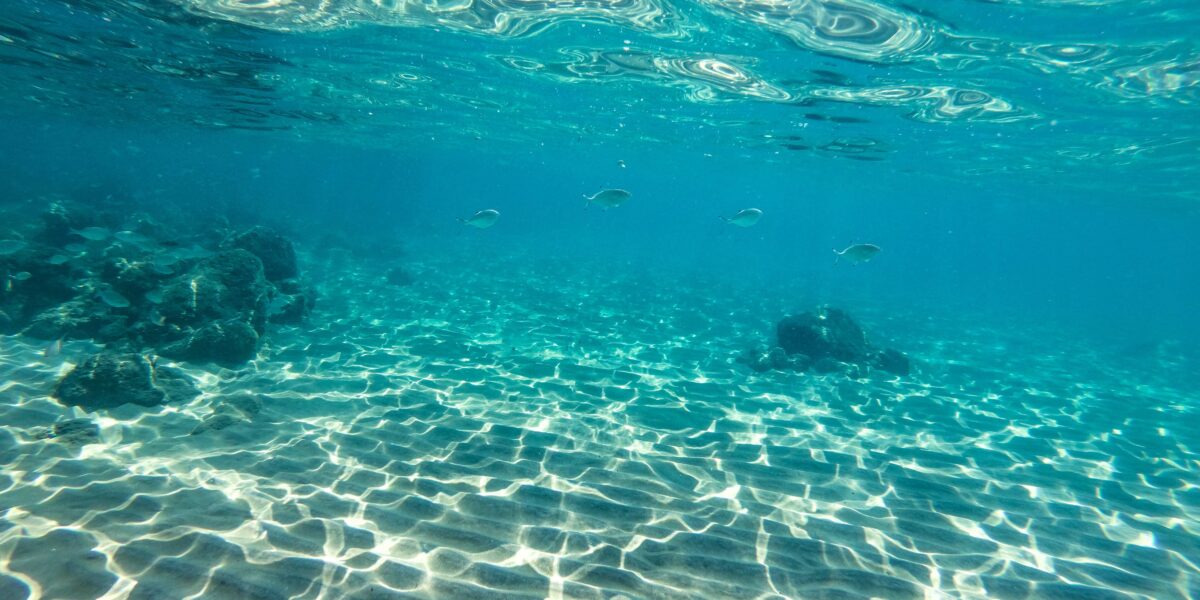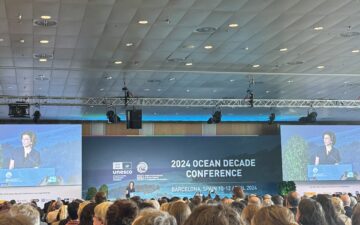The Solution: Won’t Be Found in the Infrastructure Bill
Climate change is the largest and fastest-growing threat for our ocean and coastal ecosystems. We’re already experiencing its effects: in sea level rise, in rapid temperature and chemistry changes, and in extreme weather patterns around the world.
Despite best efforts to reduce emissions, the IPCC’s AR6 report warns that we must decrease global CO2 production by about 45% from 2010 levels before 2030 – and reach “net-zero” by 2050 to curb global warming to 1.5 degrees Celsius. This is a hefty task when currently, human activities emit about 40 billion tons of CO2 into the atmosphere in a single year.
Mitigation efforts alone are no longer enough. We can’t fully deter the effects on our ocean’s health without scalable, affordable, and safe Carbon Dioxide Removal (CDR) methods. We must consider the benefits, risks, and costs of ocean-based CDR. And in a time of climate emergency, the newest infrastructure bill is a missed opportunity for real environmental achievement.
Back to the Basics: What is Carbon Dioxide Removal?
The IPCC 6th Assessment recognized the need to reduce greenhouse gas (GHG) emissions. But it also saw the potential of CDR. CDR offers a range of techniques to take CO2 from the atmosphere and store it in “geological, terrestrial or ocean reservoirs, or in products”.
Simply put, CDR addresses the primary source of climate change by removing carbon dioxide directly from the air or the ocean’s water column. The ocean could be an ally to large-scale CDR. And ocean-based CDR can capture and store billions of tons of carbon.
There are many CDR-related terms and approaches used in varying contexts. These include nature-based solutions – such as reforestation, land-use change, and other ecosystem-based approaches. They also include more industrial processes – such as direct air capture and bioenergy with carbon capture and storage (BECCS).
These methods evolve over time. Most importantly, they vary in technology, permanence, acceptance, and risk.
KEY TERMS
Where the Newest Infrastructure Bill Misses the Mark
On August 10, the U.S. Senate passed the 2,702-page, $1.2 trillion Infrastructure Investment and Jobs Act. The bill authorized more than $12 billion for carbon capture technologies. These include direct air capture, direct facility hubs, demonstration projects with coal, and support for a pipeline network.
However, there is no mention of ocean-based CDR nor of nature-based solutions. The bill seems to offer false technology-based ideas for reducing carbon in the atmosphere. $2.5 billion is allocated for storing CO2, but with no place or plan to store it. What’s worse, the CDR technology proposed opens a space for pipelines with concentrated CO2. This could lead to disastrous leakage or failure.
Over 500 environmental organizations are publicly against the infrastructure bill, and signed a letter asking for more robust climate goals. However, many groups and scientists back the bill’s carbon removal technologies despite its underlying support to oil and gas industries. Supporters think it will create infrastructure that could be useful in the future and is worth the investment now. But how do we respond to the urgency of climate change – and protect biodiversity by bringing restorative actions to scale – while recognizing that urgency is not an argument for not being cautious in understanding the issues?
The Ocean Foundation and CDR
At The Ocean Foundation, we are extremely interested in CDR as it relates to restoring the ocean’s health and abundance. And we strive to operate with a lens of what’s good for the ocean and marine biodiversity.
We need to weigh climate change’s harm to the ocean against additional unintended ecological, equity, or justice consequences from CDR. After all, the ocean is already suffering from multiple, culminating harms, including plastic loading, noise pollution, and over extraction of natural resources.
Fossil fuel free energy is a key prerequisite for CDR tech. Thus, if the infrastructure bill’s funding were reallocated to zero emissions renewable energy advancement, we would have a better chance against carbon emissions. And, if some of the bill’s funding were redirected to ocean-centric nature-based solutions, we would have CDR solutions that we already know store carbon naturally and safely.
In our history, we deliberately ignored the consequences of industrial activity increases at first. This caused air and water pollution. And yet, over the last 50 years, we’ve spent billions to clean up this pollution and are now preparing to spend billions more to mitigate GHG emissions. We can’t afford to ignore the potential for unintended consequences again as a global society, especially when we now know the cost. With CDR methods, we have the opportunity to think thoughtfully, strategically, and equitably. It’s time we collectively utilize this power.

What We’re Doing
Across the globe, we have delved into nature-based solutions for CDR that store and remove carbon while protecting the ocean.
Since 2007, our Blue Resilience Initiative has focused on the restoration and conservation of mangroves, seagrass meadows, and saltwater marshes. This offers opportunities to restore abundance, build community resilience, and store carbon at scale.
In 2019 and 2020, we experimented with sargassum harvesting, to capture harmful macro-algal blooms of sargassum and turn it into fertilizer that moves carbon captured from the atmosphere into restoring soil carbon. This year, we are introducing this model of regenerative agriculture in St. Kitts.
We are a founding member of the Ocean and Climate Platform, advocating for country leaders to pay attention to how the ocean is being harmed by our disruption of the climate. We are working with the Aspen Institute’s Ocean CDR Discussion Group on a “Code of Conduct” for ocean-based CDR. And we are a partner of Ocean Visions, recently suggesting improvements to their “Core Premises of the Ocean Climate Alliance.”
Now is a singular moment in time in which the need to do something about climate change is compelling and necessary. Let’s carefully invest across the portfolio of ocean-based CDR approaches — in research, development, and deployment — so we can tackle climate change at the scale needed in the coming decades.
The current infrastructure package provides key funding for roads, bridges, and a needed overhaul of our country’s water infrastructure. But, it focuses too much on silver bullet solutions when it comes to the environment. Local livelihoods, food security, and climate resilience depend on natural climate solutions. We must prioritize investment in these solutions that are proven to perform, rather than divert financial resources to unproven technologies.







